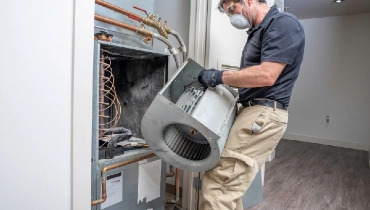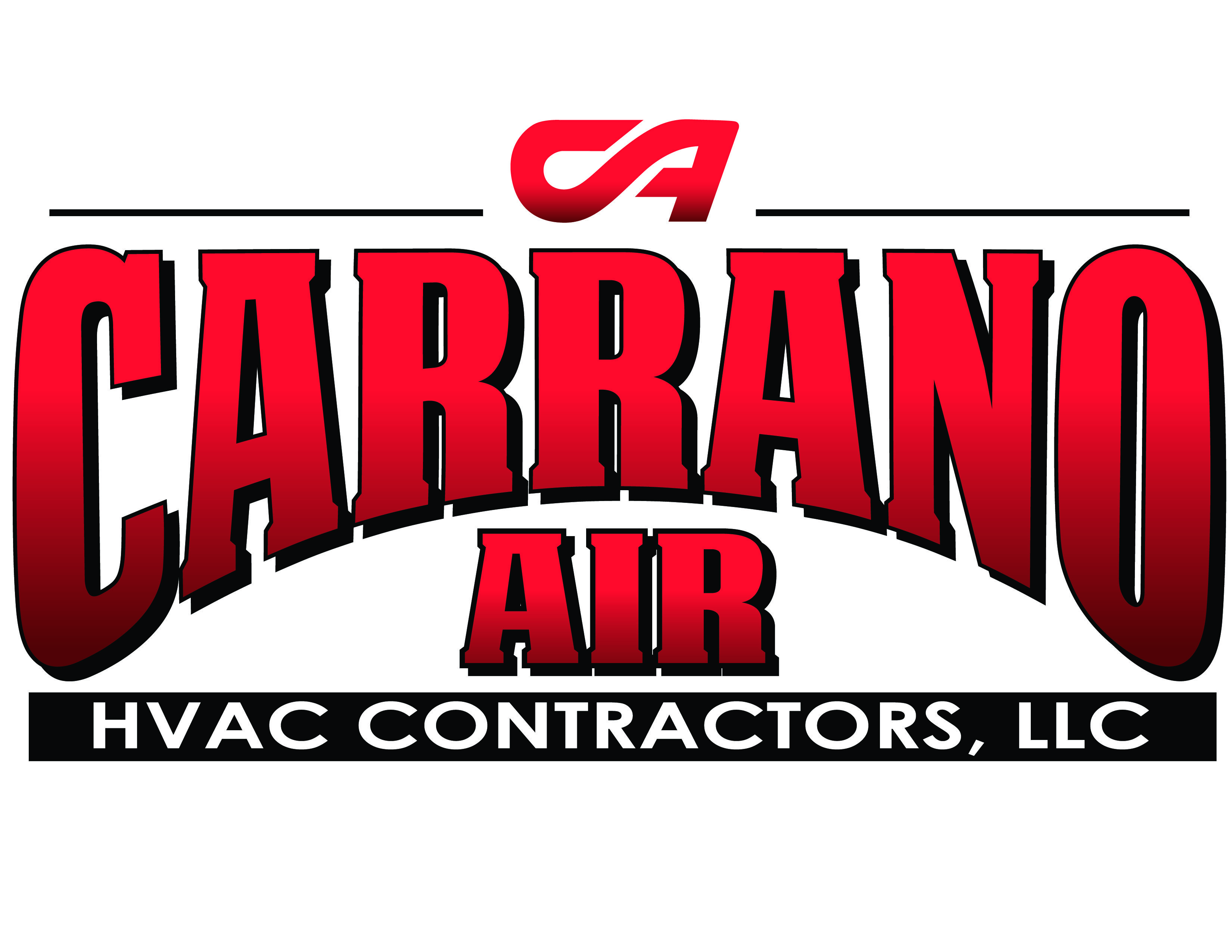
Where is the fan motor on a furnace? If you’re wondering, chances are your furnace is making strange noises or is struggling to move hot air efficiently into the rooms of your home.
Home and business owners often struggle with HVAC issues, including furnace noise, inefficient heating, and sudden heater outages. AC & Heating Experts Princeton, Princeton’s furnace maintenance specialist, can help you navigate your home furnace’s components and handle daily maintenance tasks.
If at any point you don’t know how to perform maintenance on your home’s heating or cooling system, don’t risk injury or accidental damage to your furnace. Call AC & Heating Experts Princeton professionals for precision furnace repairs around New Jersey . We support our local community with affordable heating and cooling services and helpful maintenance tips on our blog.
What Does the Blower Do?
The blower is an electric fan that circulates the air in the ducts to heat or cool the different rooms in your home. The ability to move air efficiently is critical for HVAC systems and heat pumps, as the heating or cooling system will become overloaded if the rooms in the home remain too hot or too cold. Efficient airflow prevents dust and dirt from getting stuck in the ducts, keeping your system cleaner and improving air quality.
Why Might I Need to Access the Blower Motor?
If your furnace is working properly, the fan motor should cycle on and off during the day when your HVAC system is in heating mode. In general, the furnace fan motor does not require regular maintenance other than occasional dusting.
However, there are several reasons a homeowner or HVAC specialist might need access to the fan motor in addition to regular cleaning.
- To diagnose a howling or grinding noise from the HVAC system
- To determine why your HVAC system vents are not producing a strong flow of cold or warm air
- To investigate a sudden failure of the heating or cooling system
- If your heating system shuts down due to a safety issue, you may need to reset the furnace ignition.
In many HVAC systems, the reset button is located near the fan motor. To reset the furnace, it’s helpful to know, “Where’s the fan motor on the furnace?”
Finding the Blower Motor
After you have disconnected the furnace from the power supply by flipping the power switch or turning off the power at the fuse box, look for an access panel on the side of the furnace. The blower motor is part of the blower assembly, which sits in a housing with ventilation holes called the housing. If you or a technician needs access to the fan motor, an important step is to remove the motor from the housing.
The exact size and shape of the motor will vary by make and model of HVAC system, but the shape and construction should be consistent.
Blower motors are typically located near the furnace air filters in the furnace cavity. This is handy because dirty air filters can cause problems with the blower motors. Therefore, it is easy to check both at the same time.
Troubleshooting Problems with the Blower Motor
If your blower motor is not running, the motor itself could be damaged, or a part associated with the blower motor could be defective. Know the telltale signs of each of the following problems and how to solve them.
A Worn-Out Blower Motor
If you suspect the fan motor is worn out due to low airflow and insufficient heating, see if you can smell the smoke coming from your furnace. Check carefully whether the engine has overheated. Visually inspect the engine for signs of damage.
When your blower motor has reached the end of its life you may need to replace it. Depending on the model, a replacement fan motor can cost around $1,000 to $1,500. Replacing an engine can cost several hundred dollars.
Poor Airflow
If the fan motor has problems with air movement, it may overheat if it keeps running. Your fan motor may shut down as a protective measure if the furnace is not getting adequate airflow due to obstructions.
Bad Bearings
The bearings allow the fan motor to operate smoothly to create air movement without generating excessive heat or noise. If the bearings don’t work properly, you can lubricate the ball bearings on some fours or replace defective bearings. In many cases, however, the entire motor has to be replaced.
Damaged Fan Blades
If dirt gets into the ducts and hits the fan blades, it can scratch or dent it, causing it to become unbalanced or rub against another part of the engine. In both cases, the fan blade generates noise and heat. If the fan blade is not replaced, the motor will likely be damaged or wear out prematurely.
Corrosion
Blower motors, like almost all other types of motors, do not run well and can fail completely if rusted. Make sure your fan motor and its housing are protected from moisture and other potentially harmful elements.
Electrical Problems
Before replacing a fan motor, make sure it is properly connected to the electrical system. Look for frayed cables, loose wires, or bad connections. As with the fan motor itself, look out for signs of excessive heat or burns that could be the result of a spark.
Your fan motor may not turn on if it doesn’t get an electrical signal from the thermostat telling it that the rooms in your home are too cold. A technician should check your entire HVAC electrical system when diagnosing a fan motor that will not turn on.
Blower Motor Repairs
If you’re lucky, you can replace the damaged parts without having to replace the entire fan motor. This might save you some money, but it will require you to disassemble the motor. Unless you have extensive HVAC repair experience, it is best to leave blower motor repairs to a licensed furnace repair company. Of course, you can’t start repairing the fan motor until you can answer the question “Where is the fan motor on a furnace?”.
Replacing a Blower Motor
Once you locate the fan motor, identify the fan motor type, manufacturer, and model number so you can order a replacement. Turn off the furnace and open the access door. You can disconnect the motor wiring, remove the motor from the case and install the new motor.
The process can be complex and requires work on electrical wiring. If you do not replace the blower motor properly, it may not work properly and you could inadvertently damage your furnace. For these reasons, and to save time and energy, most homeowners entrust fan motor replacement to an HVAC repair technician.
If you are replacing your fan motor, consider upgrading to a furnace with a variable speed motor. Unlike a traditional engine, variable speed engines can run faster or slower depending on heating and cooling needs. Because they work more efficiently, they last longer than traditional blower motors and reduce energy costs.
Why Should I Hire a Professional to Fix or Replace My Blower Motor?
You may be tempted to save on labor costs by repairing or replacing your fan motor yourself. However, if you are unfamiliar with fan motor technology and furnace repair safety best practices, your best bet is to hire a professional to repair it. If you’re at a point where you’re wondering, “Where’s the blower motor on a furnace?” You probably need to learn a little more and ask more questions before you’re ready to tackle your first furnace repair project.
Do-it-yourself repairs to furnace components may void your warranty and make insurance claims difficult to process if your furnace malfunctions in the future and causes injury or property damage. It is safest to document that all work on your HVAC system was performed by a trained and experienced technician.
For High-Quality, Dependable Furnace Service, Call AC & Heating Experts Princeton
With AC & Heating Experts Princeton’s experienced team at your side, repairing or replacing a fan motor is no problem. Our skilled technicians work efficiently to reduce labor costs. We have a large inventory of affordable replacement parts including blower motors and motor components. Let your question be simple, “Where is the blower motor located in a furnace?” or a more complex diagnostic problem, we’re here to help.
Protect your furnace and family from the long-term consequences of a defective blower motor. Unless you’re an experienced mechanic, don’t take the risk of repairing yourself. Call AC & Heating Experts Princeton professionals at (609) 293-4475 for repairs on many types of furnaces.
